The efficiency of heating of any object of residential or industrial purposes is possible with ...
|
|
Thanks to the lightning development of innovative building technologies, in the arsenal ... |
To protect and decorate the concrete fence, color should be carried out. Painting... |
Ways to insulate the ceiling
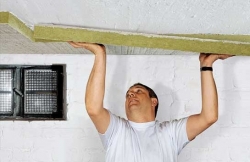
Large heat loss of the room and cold air blowing from the ceiling, a consequence of improper or poor -quality thermal insulation. Heating losses through the ceiling can reach 20%, since the heated air rises up, and if a barrier does not meet in its way that can hold it indoors, it will blow it out, like your budget. The ceiling insulation measures should be completed at the stage of building a house. But if for some reason this did not happen, or the old thermal insulation has become unusable, you will have to do everything again. What are the ways of warming the ceiling, how to realize them in one case or another, what materials are the main issues that arise among the owners. At the same time, it is important to do everything right so that the insulation does not dump, condensate does not accumulate on the surface, mold or fungus does not appear. And for this, it is necessary to understand the very essence of the works and processes occurring in the insulation.
- Why and how to insulate the ceiling
-
The ceiling insulation outside (from the side of the upper room)
- Warming the ceiling with sawdust
- Ceramzitis ceiling insulation
- Ceiling insulation clay
- Ceiling insulation reeds
- Ceiling with algae
- Warming of the ceiling ecowide
- The ceiling insulation with foam -polex
- Insulation of the ceiling with mineral wool (ursa)
- Insulation of the ceiling with foam (polyurethane foam)
- Ceiling insulation from the inside
Why and how to insulate the ceiling
What is meant by warming the ceiling? If it blows from above, from the side of the ceiling, we say we need to insulate the ceiling, but what actions are meant by this? In fact, there are several technologies, and which one is suitable in each case depends on the starting conditions.
In a private house, the ceiling insulation is always carried out from the side of the upper room: Whether it is the attic, the next floor or attic. Laying the heat -insulating material on top of the ceiling or into the voids of the ceiling ensures the retention of heat indoors. At the same time, the height of the insulated room does not decrease, the additional ceiling is not required, and also does not have to mount thermal insulation right above the head, because it is not so easy to fix it, and the particles will penetrate into the dwelling. But the most important processes occurring in the ceiling and thermal insulation material provide heat and dryness of the room and materials, the condensate is not formed and the insulation does not get wet.
What is the principle of insulation of the attic? It's no secret that the best insulation is air. All modern thermal insulation materials are essentially the air concluded in one way or another in the form. But how can I use air for insulation so as not to pay for it? Our ancestors acted very wisely when they built houses with a gable roof and exclusively a cold attic, in which there were two windows in the pediments. Our climate allows you to beat this situation in favor. The gable roof is well delayed by snow, which is also a heater. The roof covered with snow so well holds heat that even if in the yard is -25 s, then inside the attic a temperature is about 0 C. Air, locked in the attic room, an ideal insulator, the characteristics of which can be changed depending on the season or weather, opening and closing window in the pediments and ventilating the room. The floor of the attic was always insulated with loose natural materials, in conjunction with air, this made it possible to maintain the temperature inside the heated room +20 +25 C. Plus insulation of the floor in the attic is also that the material does not dive, it can be dried, ventilating the room.
Extremely important! In order for the attic to perform the function of the heat insulator, you can not warm the roof slopes from the inside. This will lead to the fact that the snow on the roof will be tangled, and icicles will form on the overhangs. In addition, the design of an unscheduled roof is always open for inspection and repair.
Important! The heating attic insulated from all sides is no longer an attic. This is an attic, more acceptable for climate of warm countries of Western Europe. The design and operation of the attic has its own rules.
In the apartment of a multi -storey building, everything is somewhat different. It is not possible to insulate the floor or floor of the upper floor. And the problem of a blown ceiling most often occurs in residents of the last floor. What to do? The only option to insulate the ceiling from the inside of the room, although this is not recommended, but there is no other choice.
When warming the ceiling, it is important to remember the following rule: each subsequent layer in the direction from the room should have a greater vapor -resistant ability.
Below, we consider separately the methods of insulation of the attic outside and from the inside.
The ceiling insulation outside (from the side of the upper room)
Insulation of the ceiling from the side of the upper room involves laying the heat -insulating material on top of the ceiling or in its voids, if any. As already written above, this is done in private houses and cottages. The type of material for insulation and the very technology of its laying depend on which overlap is wooden or concrete. For overlapping on beams, which is a wooden floor on the lags, lightweight filler materials or roller -type materials are suitable. But for insulation of a concrete slab, dense mats or slabs, as well as heavy filling materials.
Warming the ceiling with sawdust

One of the most ancient and time -tested methods of warming the ceiling insulation of the attic with sawdust. In some regions, you can purchase sawdust for nothing or even get free if there is woodworking nearby. Quite often at the enterprise they themselves do not know where to put it, so come and take it at least every year. It is better to fill the sawdust on top of wooden floors.
The only drawback of this method is that the sawdust is burning. Therefore, several different methods of insulation with sawdust have appeared.
Method 1. All the cracks in the wooden floor of the attic coat with clay, a little liquid. Sprinkle with sand from above. If suddenly the clay cracks somewhere, sand will immediately pour into the gap, and the integrity will remain. To protect sawdust from mice, fall asleep with a layer of bashized lime interspersed with carbide. Next is the main layer of sawdust. For various regions, the thickness of this layer can be different, but the minimum is 150,200 mm, 250 300 mm is considered optimal. Since the sawdust is fuel, it is sprinkled with a thin layer of proven slag on top, especially around hot communications of the chimney, for example. Nothing is laying on top. You can only lay out the boards for the convenience of walking in the attic.
Method 2. The surface of the floor must be protected from moisture. This can be done in two ways: the first to lay a waterproofing film on the wooden floor, capable of passing steam from the side of the room, the second as in the first way to miss the entire floor with clay. Then it is necessary to mix sawdust with cement. To do this, 10 parts of sawdust, approximately 1 2 parts of cement and 1.5 parts of water are taken. First, the sawdust is mixed with cement, then water is added. The sawdust should get wet slightly so that cement sticks to them. The resulting mixture can be poured from above on the floor of the attic or filled up between the beams of the ceiling on the black floor. The layer of 200 mm will be enough. It is necessary to start doing all these works in the spring, so that during the summer the sawdust with cement has time to dry well (they dry for a long time).
Important! To check whether the sawdust has dried up or not, it’s easy: it’s enough to walk along them. Dry sawdust will not be crushed, but will be slightly crunching.

Method 3. Similar to the second method. Only clay is used instead of cement.
Method 4. Similar to the first method. You can not sprinkle slag on top. Sawdles can be spread with clay on top only not very liquid so that it does not spill deep inside.
Ceramzitis ceiling insulation
Considering that expanded clay material is quite heavy, it is not recommended to insulate them with wooden floors. The risk that a wooden flooring can fail is too great. Ceramzitis of the ceiling with concrete ceilings is carried out.
First of all, the surface of the concrete floor must be covered with a vapor barrier film. It should be laid out with an overlap, glue the joints with tape. An entrance is made on the walls, approximately 40 50 cm. Wooden rafters and chimney also need to be glued with vapor barrier film.
Next, wrinkled clay is laid on the film. And already from above expanded clay. For better thermal insulation, take a mixture from a large and small fraction of expanded clay. Then the small will fill the voids, and the backfill will turn out to be more homogeneous. For a cold climate, a expanded clay layer should be 50 cm. Recommended in some sources of 15 20 cm will not save the situation. It is due to the fact that for high -quality thermal insulation expanded clay should be covered with such a large layer, it is rarely used.
A light cement-sand screed with a layer of 50 mm is equipped on top of expanded clay. The solution should be thick enough so as not to spill deep into the backfill. Thus, the attic will turn out a fairly strong floor, and it can be used to store something or as a boiler room. A big plus is also complete fire safety and environmental friendliness of this method.
Ceiling insulation clay
Clay is ancient building material, the areas of the application of which are diverse and multifaceted. Cly in insulation is not used in itself, since for effective thermal insulation its layer should simply be colossal 50 80 cm. A similar severity will not be able to withstand a wooden ceiling, and such a thickness of the backfill is simply impractical, it is better to choose modern material.
Therefore, for insulation of the ceiling, clay is used in a mixture with sawdust.
First, the floor is covered with a vapor barrier film that does not pass water. Next, you can prepare a clay-blank solution. Water is poured into a large barrel, in which 4 5 buckets of clay are added. Then the clay is kneaded in water so that the water acquires a dirty color, and the clay is almost dissolved. Next, part of the resulting mixture is poured into the concrete mixer and filled with sawdust. As stirring, the amount of water is added. As a result, the solution should be either liquid or thick.
Next, the resulting mixture is applied to the ceiling with a layer of 150 200 mm. The surface is leveled and left to dry. As it dries, cracks may appear. They are covered with ordinary clay.
Ceiling insulation reeds
A great option for insulation of the ceiling in the attic of a wooden house of a mat from reeds. Modern reed mats, tied with twine or wire, simply lay on top of the ceiling. It is better if there are 2 layers, the second of them will block the joints of the mats of the first layer, removing the bridge of the cold. The lack of this method is fire hazard.
Ceiling with algae
For those who want to insulate the ceiling with natural materials, seaweed are suitable. In the Primorsky regions, this material can be bought for pennies, and with a great desire you can also order delivery to another region. The advantage of lamps from seaweed is that mice do not start in them, they are hypoallergenic and even therapeutic, as they are saturated with iodine and sea salt, the pairs of which are useful, and also do not support combustion and do not smoke. In algae, insects and microorganisms do not start.
Sea algae are not afraid of moisture, so there is no need to vapor barrier. Directly on the ceiling or floor, ramps with a layer of 200 mm are laid. On top you can equip the floor or lay boards for the convenience of moving.
Warming of the ceiling ecowide
Ecowata or cellulose cotton wool modern material, which is positioned as natural. To reduce the combustibility, it is treated with antipyrens or boric acid. Ecowata absorbs moisture in itself, so it is not necessary to lay a vapor barrier film.
Immediately on wooden or concrete ceilings, ecowata is laid. This requires a special blowing installation, thanks to which all the cracks are blown, a layer of insulation is monolithic and saturated in the air inside. For most regions of the Russian Federation, there are enough layers of ecovy 250 mm, but in colder regions it is better to make 400 500 mm.
The technology of insulation of the ceiling with ecowide sometimes includes spraying water. It is needed in order to accelerate the formation of lignin. Then, after 1 3 weeks, a crust appears on top of the ecovy. Due to the fact that this material has the ability to be tied, it is always necessary to take a supply of 5 15 %.
The ceiling insulation with foam -polex
Penoproplies Representative of the family of extruded polystyrene foam. This material has greater strength than foam, which means that it can be used to warm concrete floors before pouring a concrete floor on top. A good option for warming the ceilings of the first or second floor of a low -rise private house.
Warm the ceiling with foam poom, if the ceilings are wooden, is not recommended. The fact is that EPS material is absolutely not breathing. As a result, moisture will accumulate in wooden structures, this will lead to the appearance of mold and fungus.
Before laying a foam pool on concrete overlap, the latter must be checked for the presence of irregularities. First, the surface is aligned, only then you can lay a vapor barrier.
Then the foam poum slabs are laid out. Be sure to run away. They are attached to the surface with special dowels with a mushroom hat. The joints between the plates are filled with mounting foam. After the foam dries, a cement-sand screed is poured on top with a layer of 50 mm. It will serve as a strong floor of the attic or second floor.
Insulation of the ceiling with mineral wool (ursa)
The most popular modern material for warming the ceiling is mineral wool. One of the manufacturers of heat -insulating materials based on minerals or fiberglass is the URSA company, in the assortment of which there is both roller positions and hard slab.
Minvat Ursa in rolls is good for insulation of wooden floors, it is convenient to lay it between the beams. But hard slabs of mineral wools are used to thermal insulation of concrete floors, although it is possible for wooden.
Warming with a ursa ceiling is carried out in this way:
For wooden floors. Between the beams of the ceilings, vapor barrier material is laid. Its laying is required, as Minvata is afraid of moisture. The film is spread out with an overlap, and the joints are glued with tape, a wrap of 15,25 cm is made on the walls. Next, between the beams, the rolls of the mine of Urs are laid with a thickness of 100 to 250 mm, depending on the calculations, heat loss. The material should enter the space with effort. To do this, it must be cut with a small margin of 2 cm more than the distance between the beams. Next, there are two ways: the first can be left to the mineral wool open, but then you can’t walk on the floor, the second can be made a wooden floor on top, leaving a gap between the mineral wool and the floor boards of 3 mm. The advantage of mineral wool is its fire safety.
For concrete floors. The surface of the concrete is aligned, then covered with a vapor barrier film. Minvata slabs are laid on top, it is mandatory. Next, a wooden floor or flooring of boards, plywood or other is equipped. It is not recommended to perform a screed over mineral wool, since concrete has low vapor permeability, which means that the main rule of thermal insulation will not be observed.
Insulation of the ceiling with foam (polyurethane foam)
Poliuretan foam modern material, which is advertised everywhere, as the most ideal insulation for ceilings and attics. The advantages of this material are non -combustibility, good adhesion, neutrality to microorganisms and insects, waterproofing and soundproofing properties, resistance to temperature fluctuations, the absence of cold bridges. The disadvantage is complete vapor permeability, this does not affect the microclimate of the room.
The ceiling is insulated with polyurethane foam is carried out only by specializing in this organization. The material is sprayed under high pressure so that it is blown into all the cracks and envelops the protruding elements of the column, etc. The layer is usually 10 12 cm.
Ceiling insulation from the inside
An extremely undesirable measure insulation of the ceiling from the inside of the room. In addition to reducing the total height of the premises, the danger of the collapse of the heat -insulating material or its fumes inside the room, as well as the likelihood of mold and fungus, is extremely large. But if there is no other way out, you will have to at least take into account a number of restrictions: do not use mineral wool and form a ventilation gap between the insulation and the ceiling.
The ceiling insulation with extruded polystyrene foam (foam poom)
Epps is a good option for insulation of a concrete ceiling. First, the crate is nailed, on which drywall will be attached in the future. The height of the bar of the crate should be 2 3 mm more than the thickness of the insulation. The step between the slats should be equal to the width of the foam -polex minus 1 2 mm. Next, a heater is stuffed between the crate, it must come in with an effort. For greater reliability, it must be fixed with dowels to the ceiling. Then a drywall is attached to the crate and a suspended ceiling is obtained. Instead of drywall, you can mount a stretch ceiling.
Warming the ceiling with a foam
Penophol is foamed polyethylene, one side of which is foil. Its heat -insulating properties are not so great, but if heat loss is not too large, it may be enough.
It is necessary to fill the crate on the ceiling, to which to fix the foam foil in the room. It can be beaten with nails to the crate. On both sides of this material, it is necessary to perform a ventilation gap, so another crate is filled on top of it, to which drywall is attached. A stretch ceiling option is also possible.
The second method of insulation of the ceiling with a foam use it complete with foam pool.
In addition to the method described above, foam is filled with foam, and only then drywall.
The ceiling insulation with heat -insulating plaster mixtures
For an unknown reason, the option of warming the ceiling with special heat -insulating plaster mixtures is not popular. And in vain. This is a wonderful material for insulation of a concrete ceiling. The plasters are absolutely environmentally friendly, decorative, do not suffer from moisture and steam, do not burn and are not afraid of fungus or mold. Among the materials of UMKA there are positions that can be used indoors.
Ceiling insulation with a cork
Warming the ceiling with a white agglomerate of cork tree cortex environmentally friendly natural method of insulation. It is convenient to use the cork when installing an suspended ceiling type Armstrong, fixing to the crate. The use of vapor barrier is not necessary, since the cork is not afraid of moisture.
The ceiling insulation methods described above are the most common, but the overall list does not end on them. There are many other natural and synthetic materials that can be used to thermal insulation of the attic of a private house. When choosing a particular method and material, be sure to consider the general concept of your home. For example, warming the ceiling of an environmentally friendly wooden house with a penopropeline or penopol is at least stupid. In order to preserve the wood dry and give it the opportunity to breathe, it is necessary to choose natural vapor -permeable materials, for example, algae, reeds, sawdust or ecovata. And for the house made of concrete, foam concrete or brick, EPPS and polyurethane foam will come up with the way.


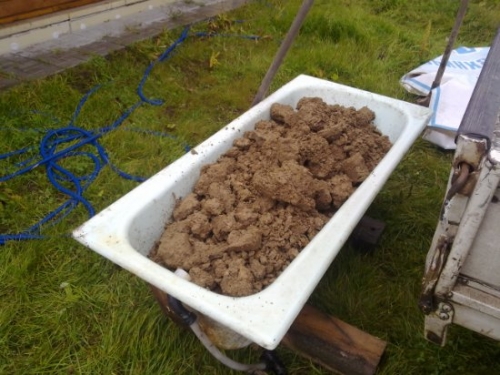
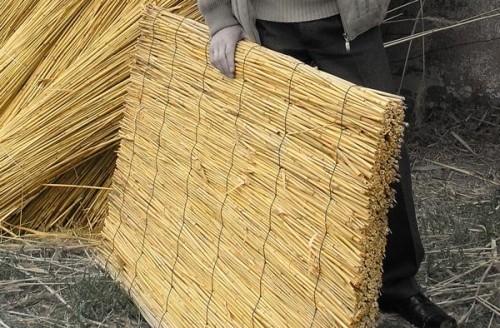
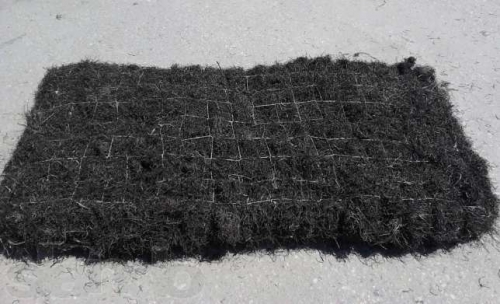
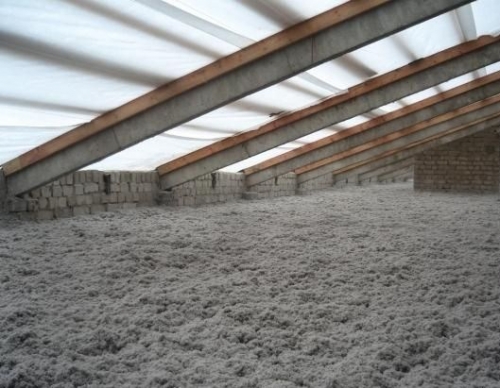

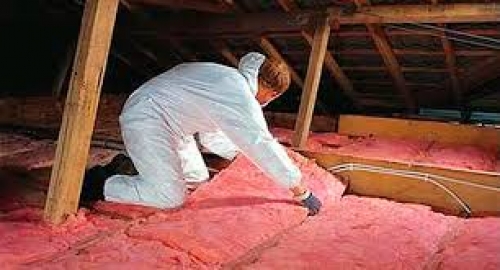
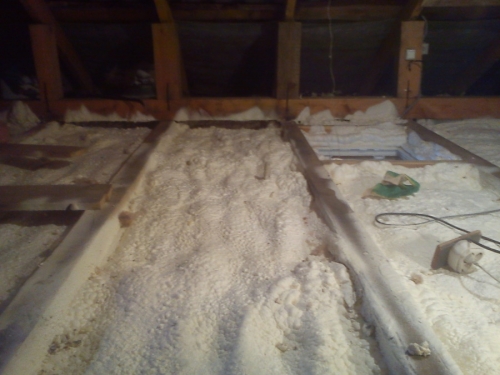
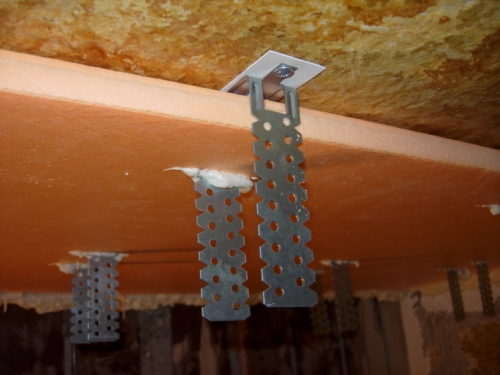
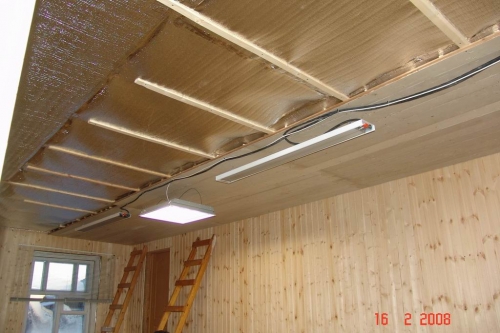
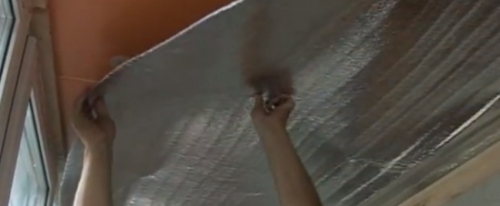
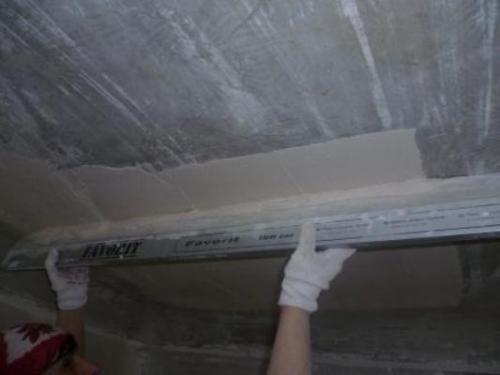
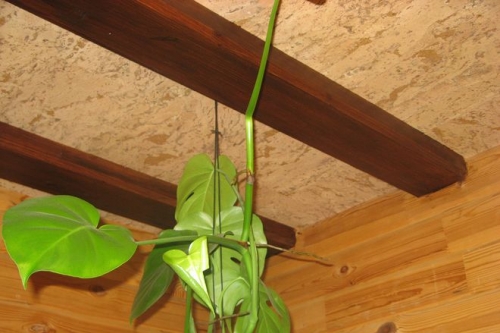
Great article, big
Great article, thank you very much!
Ukrprombud service LTD to everyone
Ukrprombud service LTD I advise everyone ... A very good company